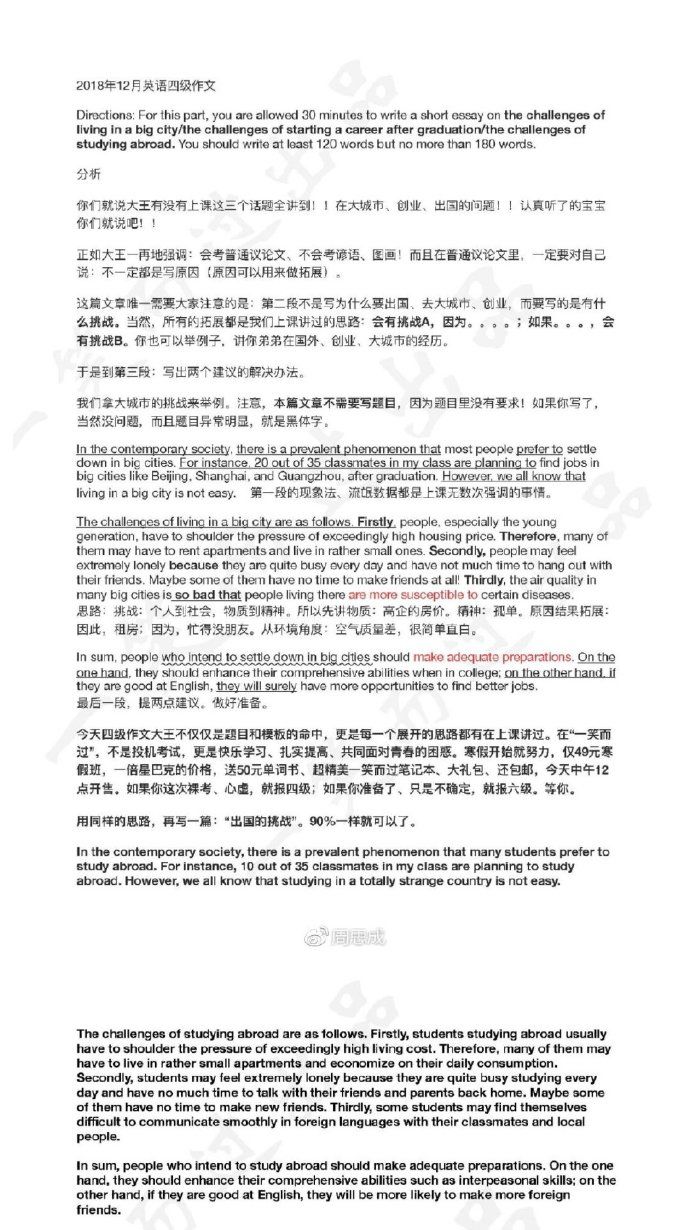LSAT考试全真试题四SECTION3(5)
|
21. The amount of electricity consumed in Millville on any day in August is directly proportional to peak humidity on that day Since the average peak humidity this August was three points higher than the average peak humidity last Ausgust, it follows that more energy was consumed in Millville this August than last August Which one of the following arguments has a pattern of reasoning most similar to the one in the argument above? (A) The amount of art supplies used in any of the Aesthetic Institute s 25 classes is directly proportional to the number of students in that class. Since in these classes the institute enrolled 20 percent more students overall last year than in the previous year mort art supplies were used in the institute s classes last year than in the provious year. (B) The number of courses in painting offered by the Aesthetic Institute in any term is directly proportional to the number of students enrolled in the institute in that term. But the institute offers the same number of courses in sculpture each term. Hence, the institute usually offers more courses in painting than in seulpture each term. Hence, the institute usually offers more courses in painting than in sculpture. (C) The number of new students enrolled at the Aesthetic Institute in any given year is directly proportional to the amount of advertising the institute has done in the previous year. Hence, if the institute seeks to increase its student body it must increase the amount it spends on advertising (D) The fees paid by a student at the Aesthetic Institute are didirectly proportional to the number of classes in which that student enrolls. Since the number of students at the Aesthetic Institute is increasing, it follows that the institute is collecting a greater amount in fees paid by students than it used to (E) The number of instructors employed by the Aesthetic Institute in any term is directly proportional to the number of classes offered in that term and also directly proportional to the number of students enrolled at the institute Thus, the number of classes offered by the institute in any term is directly proportional to the number of students enrolled in that term. 22. Letter to the editor: After Baerton s factory closed, there was a sharp increase in the number of claims field for job-related injury compensation by the factory s former employees, Hence there is reason to believe that most of those who filed for compensation after the factory closed were just out to gain benefits they did not deserve, and filed only to help them weather their job loss. Each of the following, if true, weakens the argument above EXCEPT: (A) Workers cannot file for compensation for many job-related injuries, such as hearings loss from factory noise, until they have left the job. (B) In the years before the factory closed, the factory s managers dismissed several employees who had filed injury claims. (C) Most workers who receive an injury on the job file for compensation on the day they suffer the injury. (D) Workers who incur partial disabilities due to injuries on the job often donot file for compensation because they would have to stop working to receive compensation but cannot afford to live on that compensation alone. (E) Workers who are aware that they will soon be laid off from a job often become depressed, making them more prone to job-related injuries. 23. Historians of North American architecture who have studied early nineteenth-century houses with wooden floors have observed that the boards used on the floors of bigger houses were generally much narrower than those used on the floors of smaller houses. These historians have argued that, since the people for whom the bigger houses were built were generally richer than the people for whom the smaller houses were probably once a status symbol, designed to proclaim the owner s wealth. Which one of the following, if true, most helps to strengthen the historians argument? (A) More original floorboards have survived from big early nineteenth-century houses than from small early nineteenth-century houses than from small early nineteenth-century houses. (B) In the early nineteenth century, a piece of narrow floorboard was not significantly less expensive than a piece of wide floorboard of the same length. (C) In the early nineteenth century, smaller houses generally had fewer rooms than did bigger houses. (D) Some early nineteenth-century houses had wied floorboards near the walls of each room and narrower floorboards in the center, where the floors were usually carpeted. (E) Many of the biggest early nineteenth-century houses but very few small houses from that period had some floors that were made of materials that were considerably more expensive than wood, such as marble. |








